
ENDEMIC TO THE CHOCÓ RAINFOREST OF Ecuador and Colombia, the male long-wattled umbrellabird is without a doubt among the most extravagant-looking birds of the neotropics. This handsome, black-feathered species looks most impressive during the mating season from November to February when his outlandish, Elvis-like hairdo expands over his beak, and his extraordinary wattle - resembling a phallic necktie - swells to twice its normal size.
Given its legendary looks, you may wonder why the umbrellabird has managed to evade the limelight for so long. It has never been photographed properly before and this has a lot to do with the hours it keeps, and the dark, dangerous neighbourhood in which it lives.
I first learned about the long-wattled umbrellabird in 1991, when I left South Africa for Ecuador and took up the job of creating the 21,000-acre Los Cedros Reserve in Ecuador's north-western Chocó. Thumbing through my bird guide, I chanced across a -reference to this mysterious bird and its ostentatious courtship display and decided it had to be seen to be believed.
It wasn't until 2001, however, that I actually set eyes on the species, having joined a scientist who had located a nest in the southern stretch of the Chocó, and needed images for his research paper. I'll never forget the thrill of being one of the first photographers to witness the first officially described nest of the long-wattled umbrellabird, complete with resident female.
One afternoon, returning to camp after a day at the nest, I stumbled across a male perched in plain view and managed to snap a few shots. They were not good enough to be publishable, but it was a serious 'eureka moment' nonetheless. I knew then that photographing this charismatic species and its flamboyant courtship ritual would become my life's mission.
This story is from the {{IssueName}} edition of {{MagazineName}}.
Start your 7-day Magzter GOLD free trial to access thousands of curated premium stories, and 9,000+ magazines and newspapers.
Already a subscriber ? Sign In
This story is from the {{IssueName}} edition of {{MagazineName}}.
Start your 7-day Magzter GOLD free trial to access thousands of curated premium stories, and 9,000+ magazines and newspapers.
Already a subscriber? Sign In
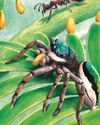
Jump Around - Bagheera Kiplingi - The acrobatic spider with a predilection for veggie food
Spiders eat flies, right? everyone knows that the 45,000 or so spiders in the world are all obligate carnivores, more or less – eating other animals, mainly invertebrates. Nature, however, loves an exception, and one particular spider missed out on that ecological memo. It goes by the wonderful scientific name of Bagheera kiplingi, and its claim to fame is that its diet is – at least mostly – vegetarian.
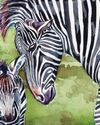
Female of the Species - Zebras - A strong sisterhood is key to staying safe
Zebras are masters of confusion. Their collective noun is ‘a dazzle’, which is fitting since their bodies and behaviour have been surprising scientists for centuries.
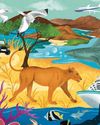
See It, Save It? - Wildlife tourism can be a powerful ally in protecting nature - but it can also harm it. We weigh up the pros and cons.
The sums of wildlife travel aren’t as simple as more tourists equals happier nature. How much did my visit really contribute to the conservation of Lady Liuwa and her habitat – and was that outweighed by carbon emissions from my flights? Did my presence disturb the animals’ natural behaviour more than it reduced the threat of poaching or benefited local communities?The question of whether wildlife travel is, on balance, good for wildlife is a complex one – and there’s no simple answer.

Can Your Really Offset Emissions? - Planning an overseas wildlife-watching trip entails facing some inconvenient truths
Imagine (or maybe you don't need to) that you hanker after the safari trip of a lifetime in sub-Saharan Africa. A 17-day tour beginning at the iconic Victoria Falls, passing through Zimbabwe, Zambia, Malawi and Tanzania, taking in some of the continent’s most wildlife-rich national parks, and ending on the lush island of Zanzibar.

Metamorphosis: a life-changing event
WITH EVOLUTIONARY BIOLOGIST JV CHAMARY
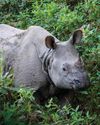
New series for BBC One: Asia
Settle in this autumn for a new natural-history extravaganza on BBC One and iPlayer: the longawaited Asia, presented by Sir David Attenborough.
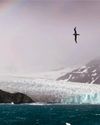
Loss of Antarctic sea ice could impact seabird food supply
Albatrosses and petrels may be forced to fly further to feed
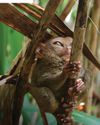
Tarsiers in trouble
Urgent action is needed to ensure survival of the Yoda-like primate

SNAP-CHAT
Chien Lee on shrew loos, rogue drones and being rained out of bed
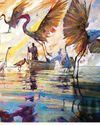
VISIONS OF NATURE
The winners of the Wildlife Artist of the Year competition 2024, from David Shepherd Wildlife Foundation